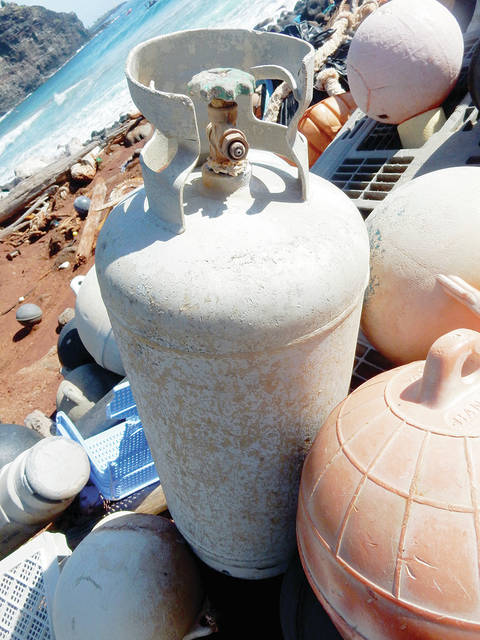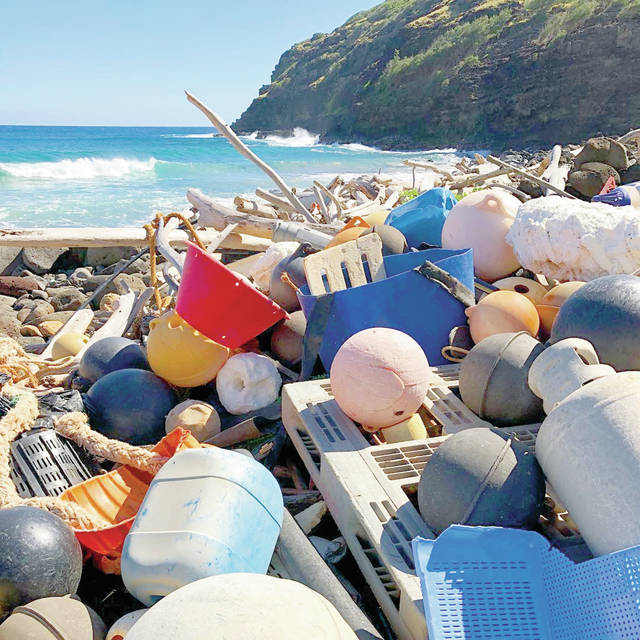LIHUE — Sunshine is better paired with sand and sea than plastic, according to a study published recently by the University of Hawaii at Manoa’s School of Ocean and Earth Science and Technology.
The study, published in PLOS ONE, reports common plastics sitting in the sun produce the greenhouse gasses methane and ethylene.
“Plastic represents a source of climate-relevant trace gases that is expected to increase as more plastic is produced and accumulated in the environment,” said David Karl, senior author on the study.
He continued: “This source is not yet budgeted for when assessing global methane and ethylene cycles, and may be significant.”
Greenhouse gases directly influence climate change —affecting sea level, global temperatures, ecosystem health on land and in the ocean, and storms, which increase flooding, drought and erosion, according to scientists at SOEST.
“Considering the amounts of plastic washing ashore on our coastlines and the amount of plastic exposed to ambient conditions, our finding provides further evidence that we need to stop plastic production at the source, especially single use plastic,” said lead author Sarah-Jeanne Royer.
Currently, Royer is working to develop estimates of the amount of plastic exposed to the environment in oceanic and terrestrial regions, globally, in order to constrain the overall greenhouse gas emissions from plastics.
And while plastic sitting on the beaches is leaching chemicals into the air, ecologists and volunteers that clean Kauai’s beaches say it’s not as much as is emitted when the debris reaches the H-Power plant on Oahu.
“I think plastics on the beach make very small GHG (greenhouse gas) contribution compared to what is burned,” said ecologist and Surfrider Kauai member Carl Berg.
He continued: “Mixed plastic puts (out) a lot of GHG, heat, plus toxins when burned.”
In a paper he complied on GHG emissions, Berg discovered mixed plastic in a landfill produces .02 metric tons GHG/ton produced, but incinerated it is 1.22 metric tons GHG/tons produced.
He points out that’s 60 times more emissions produced by incineration than by landfilling the plastic.
One ton of mixed plastic produces about two barrels worth of oil and in 2017, Kauai’s 39.2 tons of plastic produced about 78.4 barrels worth of oil.
The SOSET science team tested plastics used in food storage, textiles, construction and other plastic goods including polycarbonate, acrylic, polypropylene, polyethylene terephthalate, polystyrene, high-density polyethylene and low-density polyethylene (LDPE).
Globally, polyethylene, used in shopping bags, takes the cake for being the most produced and discarded synthetic polymer. It was also found to take the top spot for emissions of both methane and ethylene.



